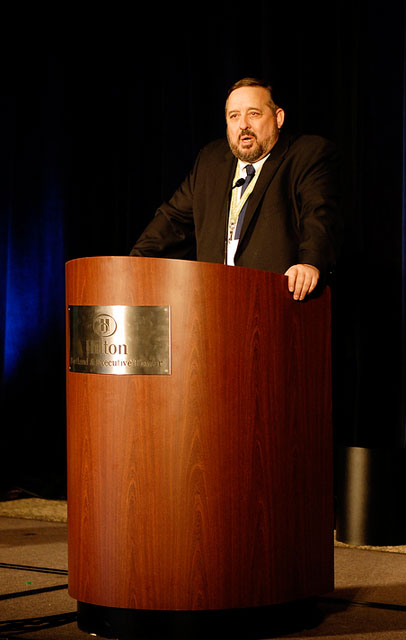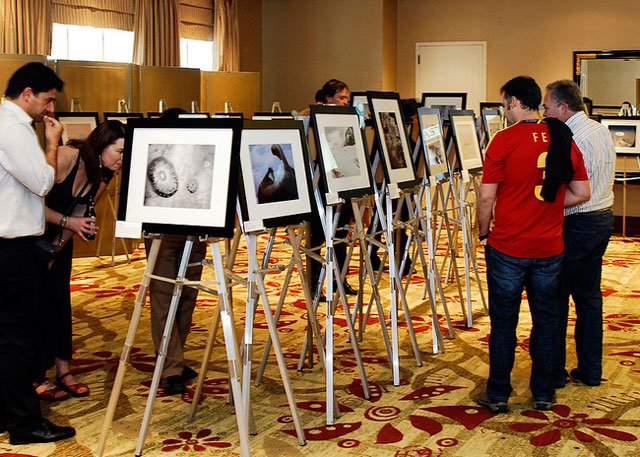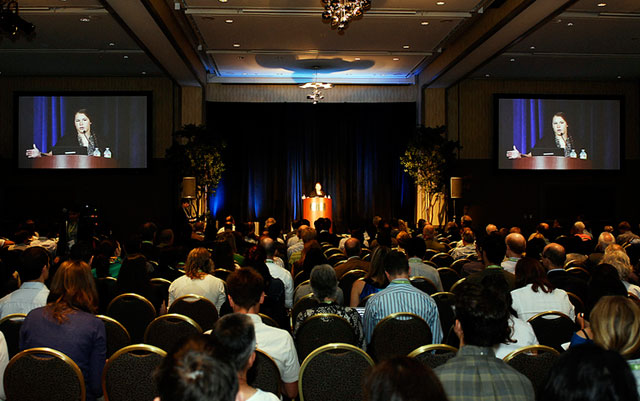|
Changing with the timesSCAR meeting returns to U.S. for first time in 26 yearsPosted August 3, 2012
It’s been 26 years since the Scientific Committee on Antarctic Research (SCAR) It was long overdue, according to outgoing SCAR President Mahlon “Chuck” Kennicutt II “I think this is a great time to demonstrate the strength of the U.S. program and how important it is in the international arena. Antarctic science, by its nature, is international,” said Kennicutt, a professor of oceanography at Texas A&M University SCAR is a nongovernmental body of the International Council for Science (ICSU) A major component of IGY was polar research, particularly in Antarctica. During a meeting in 1957, ICSU decided that there was need for an international organization to coordinate scientific activity in Antarctica — and the Special Committee on Antarctic Research was born, composed of the 12 nations actively engaged in research on and around the southernmost continent. 
Photo Credit: Portland State University
SCAR President Mahlon “Chuck” Kennicutt II speaks during the opening plenary session on July 16, 2012.
In the 50-plus years since its founding, much has changed about SCAR aside from its name. The number of member nations involved has tripled to 36, and also includes nine ICSU scientific unions. In 2000, SCAR underwent a radical re-organization to revitalize what some felt had become an insular body that hadn’t changed with the times. “There was a whole range of major changes recommended. SCAR scraped the old structure, and a totally new one created,” Kennicutt said. But one thing hasn’t changed, he added. “The fundamental mission of SCAR is a as important today, if not more so, than it was during the IGY.” That mission is two-fold: To coordinate and facilitate international research in Antarctic and the Southern Ocean, and to provide independent, authoritative scientific advice to the Antarctic Treaty System The importance of the Antarctic region to the rest of the planet — and the increasing pressures placed upon it from climate change and other human impacts such as tourism and commercial fishing — has grown in recent years. “The mission is more important now than it was 50 years ago,” said Kennicutt, a co-author on a recent policy paper in the journal Science about the future conservation challenges facing Antarctica. [See related article — Growing pressure: Scientists warn of uncertain future for Antarctica from climate change, human activities.] “SCAR sees its advisory role as more general than just the Antarctic Treaty and that is a change. Before Treaty issues were the sole focus for scientific advice, and that’s still 90 percent of what SCAR does for this part of its mission,” Kennicutt said, noting that SCAR has been sending representatives for ICSU to the International Panel on Climate Change (IPCC) The 2007 IPCC assessment report projected a sea-level rise of between 18 and 59 centimeters by century’s end, as the planet warmed. However, some criticized that report because it really only accounted for changes in the Arctic, largely ignoring Antarctica and the Southern Ocean that encircles the world’s coldest and driest continent. A report released by SCAR several years agp called Antarctic Climate Change and the Environment (ACCE) pulled together research from more than 100 scientists from many countries to provide the first comprehensive state of the climate picture for the region. It suggested that the West Antarctic Ice Sheet, in particular, could contribute significantly more water to higher sea levels by 2100. 
Photo Credit: Portland State University
It wasn't all about science at the SCAR conference. Attendees enjoy some of the images entered in a photo contest.
“That report elevated SCAR’s climate science, as far as providing authoritative updates,” Kennicutt said. “The 2014 IPCC report will be very different from the polar perspective, but we’ll see when it comes out.” SCAR also reprised its IGY role when planning began for the International Polar Year (IPY) 2007-08 “We’re just beginning to see the science and new knowledge developed by the IPY. … The effect is building, as far as scientific knowledge,” Kennicutt said. “The IPY deeply influenced Antarctic and Southern Ocean science, not only from a knowledge standpoint, but it also provided the bases for the next generation of programs,” he added. “The idea was that IPY would be a step function and not a one-time bump-up in activity. To be a step momentum must be maintained even as the IPY money fades away.” Part of hat responsibility will fall to incoming SCAR President Jerónimo López Martínez, who was elected by the national delegates during the Portland meeting. The delegates also approved the next generation of SCAR Scientific Research Programmes The next biennial SCAR meeting will be held in 2014 in New Zealand, followed by a 2016 gathering in Malaysia, which recently joined the Antarctic Treaty System. The National Science Foundation |



For USAP Participants |
For The Public |
For Researchers and EducatorsContact UsU.S. National Science FoundationOffice of Polar Programs Geosciences Directorate 2415 Eisenhower Avenue, Suite W7100 Alexandria, VA 22314 Sign up for the NSF Office of Polar Programs newsletter and events. Feedback Form |


